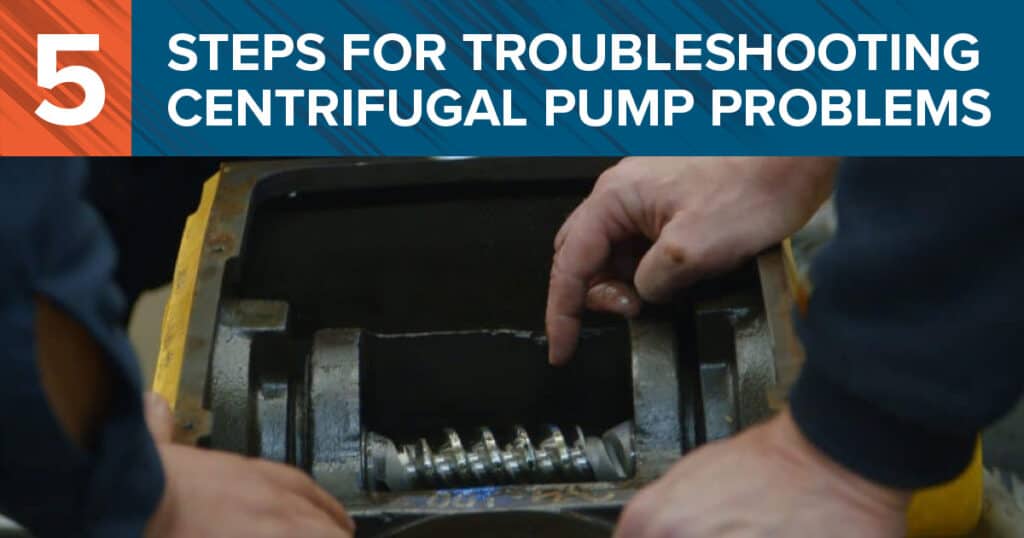Problems with a centrifugal pump can be frustrating. Issues can cause equipment damage or lead to costly downtime for unplanned repairs. One of the best ways to avoid these complications is to have a consistent preventative maintenance plan. However, unexpected problems can always happen without much warning. You must be ready to troubleshoot and resolve issues as soon as possible to prevent worsening pump system setbacks.
The Most Common Centrifugal Pump Problems
First, let’s look at some of the most common problems that can occur within a centrifugal pump system. Understanding the type of failure can help you identify the source of the issue.
- Reduced Flow Rate—Often caused by worn impellers, clogs, seal leaks, or blockages.
- Overheating—Check the lubrication, cooling system problems, or sources of excessive friction.
- Vibration—Can be the result of shaft misalignment, cavitation, imbalanced impellers, or worn bearings.
- Cavitation—Low pressure can cause vapor bubbles to form and implode.
- Excess Noise—Rattling or grinding sounds can happen because of misalignment, cavitation, or worn bearings.
- Fluid Leaks—Generally caused by seal failure or equipment damage.
- Fluid Contamination—Also usually a result of seal failure letting outside contaminants into the system.
- Motor Failure—Motor problems can cause the pump to fail or vice versa.
- Energy Inefficiency—Many different pump issues can cause loss of energy efficiency.
- Prime Loss—Air leaks in the suction line or insufficient fluid levels can result in loss of prime.
Centrifugal Pump Troubleshooting Steps
Here are five important steps you can take when trying to troubleshoot a centrifugal pump problem like those described above:
- Identify the problem(s).
It all starts with identifying what the actual problem is with your pump system. You may be experiencing more than one issue—or one very specific concern. This can help you narrow down the original source of the problem and identify which components need to be repaired, replaced, or adjusted for proper pump performance.
- Observe your equipment.
The more in tune you are with your centrifugal pump equipment, the better you will become at troubleshooting. You can identify and address minor performance issues before they develop into major failures. Even if a problem occurs, you can watch the equipment run. This may enable you to determine the problem and find the source.
- Run tests.
Sometimes identifying the source of a centrifugal pump problem isn’t easy. You can run specific tests, take measurements, and figure out what isn’t working properly. Having experience aids with this process.
- Inspect the critical components.
Most pump issues can be traced back to several critical components, including mechanical seals, shaft alignment, the impeller, bearings, valves, lubrication, and the drive motor. Unless you have a specific idea of where to start your inspection, these components are a favorable place to begin your troubleshooting process.
- Invest in advanced monitoring technology.
Today’s monitoring, control, and predictive maintenance technology is more advanced than ever. It can help you monitor and measure precise performance indicators in real-time. AI tools can instantaneously analyze the data and detect even the slightest variations. Some sensors can immediately identify performance problems and tell you exactly what’s wrong. Updated technology can be well worth the investment if it ultimately saves you more time and money.
If you are experiencing centrifugal pump problems or have any other pump management needs, count on the team at DXP Pacific to provide the support services you require. Our expert technicians are skilled at troubleshooting and can provide design, installation, training, maintenance, and repair assistance to keep your pump running its best. Contact us today to learn more.

